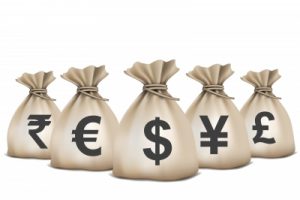
ETF s – Exchange Traded Funds – It’s What’s Inside that Count!
In our previous entry about mutual funds and how they are best understood as simply a “bag” that holds investment assets. (Mutual Funds Explained, “Bag” Analogy ) Today we are going to delve into Exchange Traded Funds or ETFs. I have some good news…….
If you understood our article on mutual funds, ETF’s will be REALLY easy to understand. An ETF is simply another bag. Lets take our grocery store analogy. When you get to the check-out counter, you are asked, “Paper or Plastic”? Does the bag really impact what you eat for dinner or is it what your put inside the bag what matters? Of course it’s what’s inside that counts!
It’s What’s Inside that Count!
Growing up, I heard the lesson time and time again, that its what’s inside that counts. Meaning that a person’s character is the most important feature and its important to maintain good character. The same is true for ETF’s. By merely being an ETF, the investment is NOT automatically superior than a mutual fund! What are the assets invested in? The thought process and analysis is the same as a mutual fund, what does the ETF or fund invest in? Is it diversified, what are the objectives.
How are ETF’s Priced
With ETF’s I have to be careful to avoid getting too complicated. So we are going to keep it as simple as possible. In general, ETF’s will trade very close to their net asset value (what all the assets/investments inside the bag are worth, check out the mutual fund bag article for a better explanation). I thought about giving the detail reason WHY but then decided that’s an advanced topic. Just understand that they trade very close to what the assets are worth inside.
One difference from a mutual fund is that the ETF will trade throughout the day similar to a stock. If you want to buy an etf at 7:45AM you can. With a mutual fund, you would have to wait until the end of the day. I think this is a minor point/issue with ETFs. A long term investor should not care if the trade completes at 7AM vs the end of the day. It does however, bring up an important point about ETFs.
Some ETF’s are not as liquid (don’t trade very often), so if you are placing a large trade relative to the volume for that ETF, you should be cautious. This danger can be viewed as a hidden cost of an ETF as the price may move to be able to complete your trade.
ETF’s have a bid/ask spread. Similar to a stock, an ETF has a price it can be bought for and a price it can be sold for. This fact should be viewed as a transaction cost to the investor. Some ETF’s have larger differences between the bid and the ask and therefore cost more.
Many times when comparing an ETF vs a mutual fund, people will forget the hidden cost of liquidity and big ask spreads when comparing to mutual funds. It’s important to look beyond the expense ratios of the two investments.
ETF’s Are not Always Cheaper!
There seems to be an assumption that ETFs are always cheaper. Often times they are but there are times they are not. The expense ratio for Pimco’s Total Return ETF is higher than the Institutional Share class of the Total Return Mutual Fund. If I have access to both investments, I would pick the mutual fund because the mutual fund has a lower expense ratio that negates some of the advantages to the long term investor the ETF might have.
The Take Away
Mutual funds and ETF’s are just bags or ways to hold assets. Look inside them when evaluating what they do and how well they do it. Do not assume ETF’s are cheaper. Look at liquidity and bid-ask spreads to get the full picture.
** The information on this website is intended only for informational purposes. Investors should not act upon any of the information here. Reh Wealth Advisor clients should discuss with their advisor if any action is appropriate.
Image courtesy of digitalart at FreeDigitalPhotos.net
